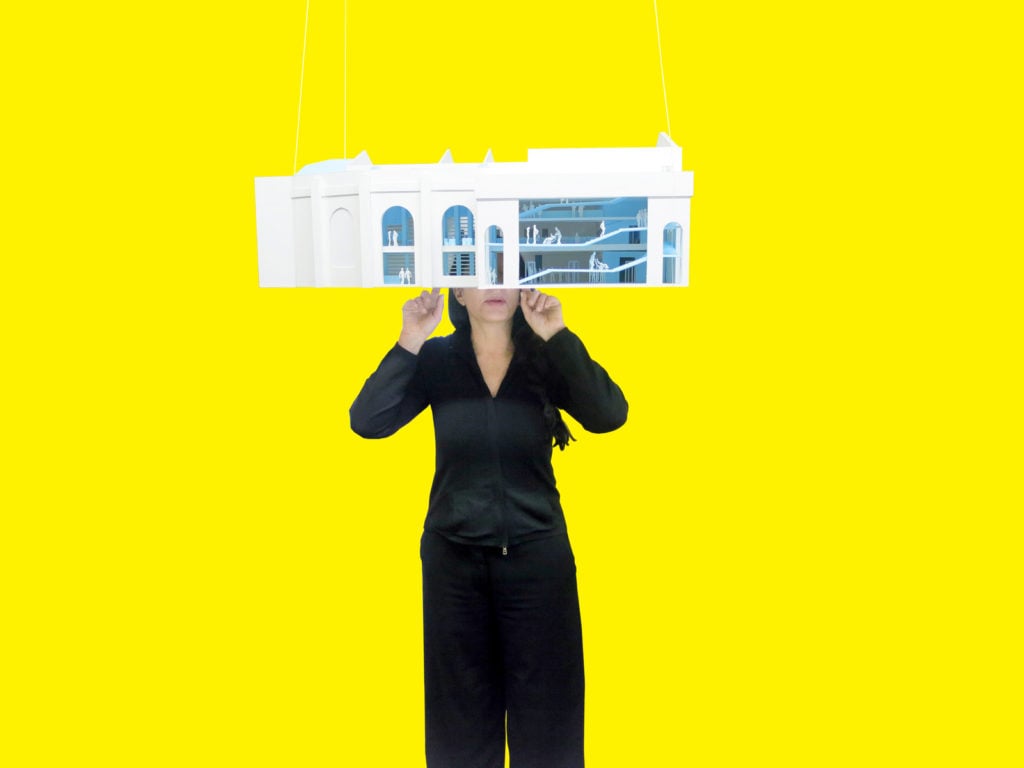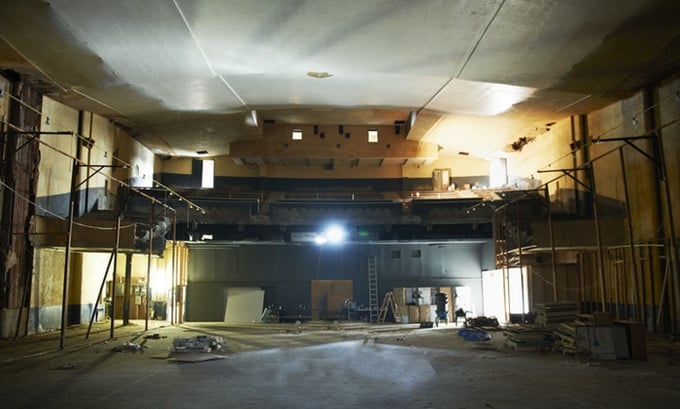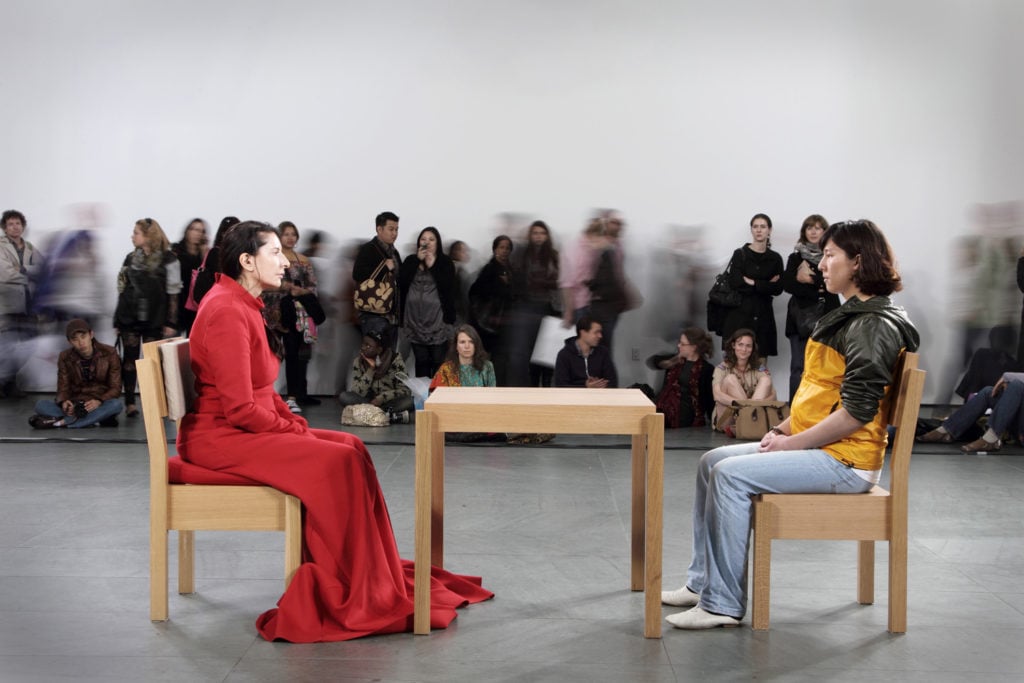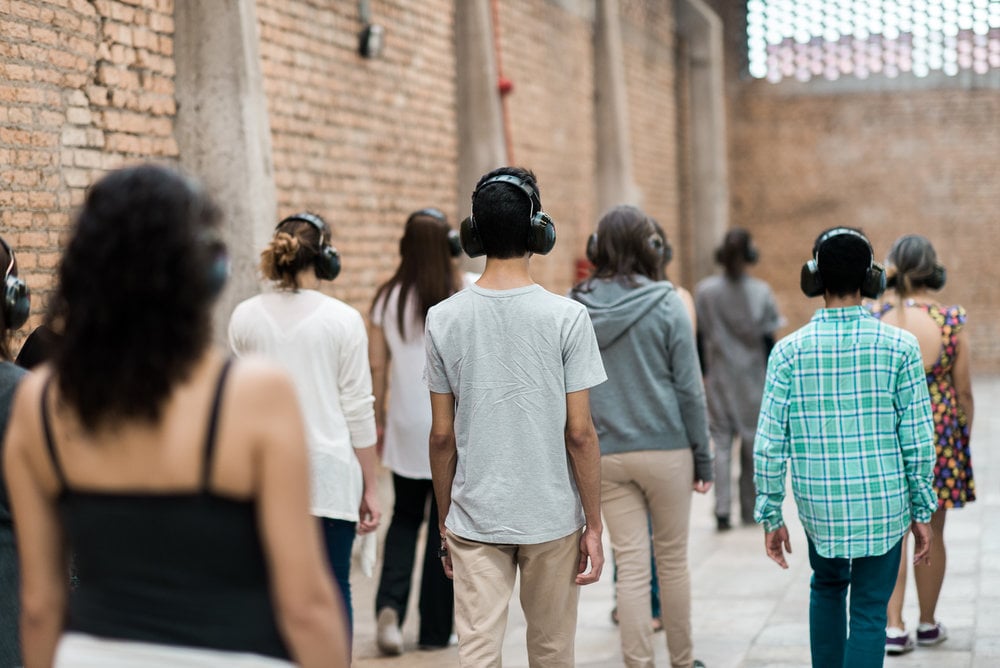People
The Artist Is Present but the Money Isn’t: Marina Abramović Scraps $31 Million Performance Art Facility
She will "probably sell" the building that was to become the $31 million Rem Koolhaas-designed center.

She will "probably sell" the building that was to become the $31 million Rem Koolhaas-designed center.

Sarah Cascone

Citing a fundraising failure, Marina Abramović has announced that she will not move forward with plans to open a $31 million upstate New York facility for the Marina Abramović Institute for the Preservation of Performance Art (MAI).
In a talk hosted by Fondation Beyeler and UBS at London’s Serpentine Sackler Gallery on Wednesday, the performance artist revealed that she had been unable to raise the money necessary to convert a 1936 former theater in Hudson into a center for durational performance art and multidisciplinary collaborations, as reported by the Art Newspaper.
The project was to be led by Dutch architect Rem Koolhaas, who had created a set of “absolutely beautiful” plans for the 33,000-square-foot space, said Abramović. Currently, however, the building’s only occupants are pigeons, and she admitted she will “probably sell it.”

The Marina Abramović Institute’s un-renovated 1936 building in Hudson, New York. Courtesy of the Marina Abramović Institute.
The lack of a dedicated physical space doesn’t mean the end of MAI, however. The institute will instead host programming around the world through events like its 2016 exhibition “As One,” at Athens’s Benaki Museum, which featured the work of 29 artists trained in the Abramović Method.
“Our slogan now is: ‘Don’t come to us; we come to you,’” said the artist. (This contradicts the initial pitch for the building, which insisted that “the traveling MAI Prototype and one-off events are no substitute for having a fully operational arts center.”)
The institute’s genesis dates back to Abramović’s blockbuster 2010 exhibition at the Museum of Modern Art in New York. For the show, the artist spent 716 hours sitting silently across from more than 1,000 of the 750,000 museum visitors who witnessed the work, The Artist is Present.

“Marina Abramović: The Artist Is Present.” Photo by Marco Anelli. © 2010 Marco Anelli. Courtesy of Sean Kelly Gallery.
“Abramović was inspired by the general public’s desire to engage with immaterial works,” the institute explains on its website. “This is when her vision of MAI was born.” Neither the artist nor the institute responded to request for comment as of publication time.
“MAI’s aim is to protect and preserve the intellectual and spiritual legacy of performance art from the 1970s into the future, and will serve as an homage to time-based and immaterial art,” said Abramović in a 2012 statement announcing the project.

Participants in an Abramović work wear noise-cancelling headphones. Courtesy of the Marina Abramović Institute.
She planned to have institute visitors sign a contract promising stay on the premises for no less than six hours at a time, and to part with cell phones and other personal items. Donning lab coats and noise cancelling head phones, participants would be led through a series of spaces and activities inspired by Abramović’s work, such as slow walking, an eye-gazing room, a crystal cave, and a meditative chamber featuring magnetic floating beds. (If that all sounds like a bit of a snoozefest, Abramović planned for that, too, incorporating a special area designed for those who fall asleep during the experience.)
Initial interest was strong, with a 2013 Kickstarter campaign raising just over $660,000. (Jay Z also made a “substantial donation” and provided the receipt after Abramović claimed he never made good on his promise.) The money, however, still didn’t come close to covering the cost of construction.
The $31 million price tag, as you might expect, was the source of some sticker shock, and Abramović soon realized that without the generosity of a major philanthropist, she would be hard-pressed to come up with those kinds of funds. It would have been great if a Russian oligarch stepped up to the plate, “but in real life, that doesn’t happen,” she lamented.
See more renderings of Rem Koolhaas’s design for MAI below.
See a 2013 video of Abramović touring the planned MAI headquarters: